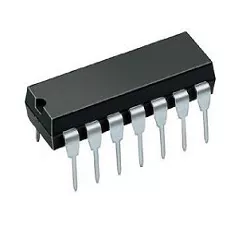Supply original LF347N/NOPB, Linear - Amplifiers - Instrumentation, OP Amps, Buffer Amps, by texas

Pictures are for reference only. Please contact us for the latest pictures.
Availability
Price Range
| Quality | Unit Price |
|---|---|
| 1 | |
| 10 | |
| 30 | |
| 100 | |
| 500 | |
| 1,000 |
Due to different local policies, please contact us for the latest quotation.
We are ISO 9001, AS 9120B, IOS 14001 certified, ensuring that our quality management system meets international standards. This certification guarantees that every electronic component we supply is authentic, reliable, and traceable. Our dedicated inspection team conducts rigorous quality checks to prevent counterfeit products and reduce failure rates. By adhering to these stringent quality controls, we provide our customers with peace of mind and products they can trust.
Overview
The LF347N/NOPB is a quad operational amplifier (op-amp) manufactured by Texas Instruments. It is designed for a variety of applications, including signal conditioning, filtering, and amplification in both consumer and industrial electronics. Here’s a detailed description of its features and specifications:
General Features:
- Quad Configuration: The LF347N/NOPB contains four independent, high-gain, frequency-compensated op-amps, allowing for multiple signal processing tasks within a single package.
- Low Noise: This op-amp is designed to provide low noise performance, making it suitable for audio and precision applications where signal integrity is crucial.
- Wide Supply Voltage Range: It operates over a wide supply voltage range, typically from ±2V to ±15V, which provides flexibility in various circuit designs.
- High Input Impedance: The LF347N/NOPB features a high input impedance, which minimizes the loading effect on the preceding stage and allows for better signal fidelity.
- Low Input Offset Voltage: With a low input offset voltage, this op-amp ensures accurate signal amplification, making it ideal for precision applications.
Electrical Characteristics:
- Gain Bandwidth Product: The gain bandwidth product is typically around 1 MHz, which allows for adequate performance in many applications, including audio and instrumentation.
- Slew Rate: The op-amp has a slew rate of approximately 0.5 V/µs, which defines how quickly the output can respond to rapid changes in the input signal.
- Output Drive Capability: The LF347N/NOPB can drive loads of up to 10 kΩ, making it suitable for interfacing with various components in a circuit.
Package Information:
- Package Type: The LF347N/NOPB is available in a standard 14-pin DIP (Dual In-line Package) configuration, which is easy to handle and solder onto PCBs.
- NOPB Designation: The "NOPB" suffix indicates that the device is lead-free and compliant with RoHS (Restriction of Hazardous Substances) standards, making it environmentally friendly.
Applications:
- Signal Conditioning: Used in applications where signals need to be amplified or filtered, such as in sensor interfaces.
- Audio Processing: Suitable for audio applications due to its low noise and high fidelity characteristics.
- Data Acquisition Systems: Commonly used in systems that require precise analog signal processing.
Conclusion:
The LF347N/NOPB from Texas Instruments is a versatile and reliable quad op-amp that offers a combination of low noise, high input impedance, and a wide supply voltage range, making it an excellent choice for a variety of electronic applications. Its robust design and compliance with environmental standards further enhance its appeal for modern electronic designs.
Product Attribute
Product Parameter
Export Classifications & Environmental
Articles
With its unique properties of radiation hardening, unlimited read/write endurance, and low power consumption, MRAM is becoming the preferred choice for next-generation aerospace memory. This article will provide an in-depth analysis of MRAM's key advantages and applications in the aerospace field.
Comprehensive overview of MR25H40CDF SPI MRAM: specs, applications, case studies, and our real-stock advantages.
Key developments and expert insights in the global electronic components industry for the fourth week of June 2025.
